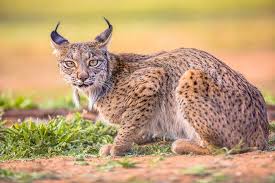
Introduction
The Iberian Lynx, a striking feline known for its distinctive tufted ears and short tail, is one of the most endangered species in the world. Found exclusively in the Iberian Peninsula of Spain and Portugal, this magnificent animal plays a crucial role in its ecosystem. Its population decline highlights the urgent need for conservation efforts to protect not only the lynx but also its habitat.
Current Status of the Iberian Lynx
As of 2023, the Iberian Lynx has been classified as critically endangered, with population estimates suggesting fewer than 400 individuals remain in the wild. A significant factor contributing to their decline is the loss of habitat due to urban expansion and agricultural development. Moreover, the decline of their primary prey, the European rabbit, due to diseases and hunting pressures, has further exacerbated the situation.
Conservation Efforts
In recent years, several concerted efforts have been made to save the Iberian Lynx from extinction. The Iberian Lynx Recovery Plan, launched by the Spanish government in collaboration with various conservation organizations, has focused on habitat restoration, rabbit population enhancement, and the establishment of protected areas. Significant achievements include the successful breeding programs held in captivity; these have resulted in the reintroduction of lynxes into the wild. In 2020 alone, over 30 lynxes were released as part of these initiatives.
International Collaboration
International collaboration has also played a vital role in the preservation of the Iberian Lynx. The Lifelong Conservation Program (LIFE) aims to enhance cooperation between Spain and Portugal to address cross-border threats to the species. These efforts not only focus on immediate survival strategies but also aim to raise public awareness about the ecological importance of the Iberian Lynx and the need for biodiversity conservation.
Conclusion
The Iberian Lynx is a testament to the delicate balance of ecosystems and the threats posed by human activity. While the species has made a slow recovery thanks to targeted conservation efforts, the need for continued support and dedication is paramount. Communities and governments must remain vigilant in their efforts to protect and restore this iconic feline’s habitat to ensure it can thrive in the wild for generations to come. The future of the Iberian Lynx holds lessons not only for wildlife conservation but also for our shared responsibility to protect the natural world.



